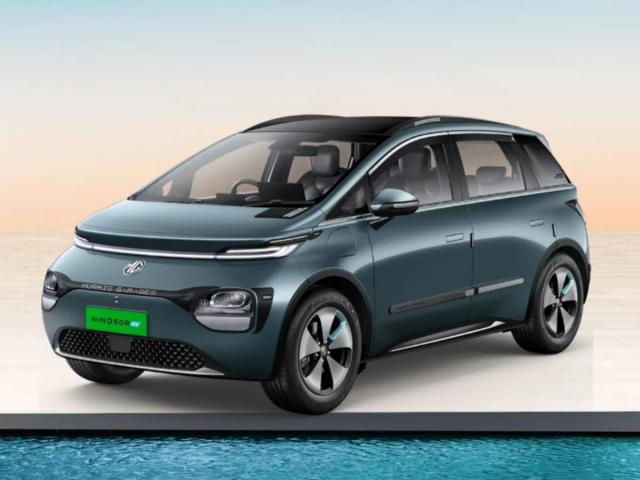


Blink blink !
Its almost here


Lost to policy: The cars India deserved but never got
- 1Most premium hatchbacks now measure more than 4 metres globally
- 2Re-engineering to control length requires hefty investments
- 3Sub-4m tax slab is crucial to make cars affordable and reduce congestion
The Indian automotive landscape has been evolving with an impressive pace, with advancements being brought in every direction, ICE, hybrids and electrics. There are a slew of options for the Indian consumer but if you zoom out a bit, you will find a stark difference between the kind of vehicles offered in India and abroad. The absence of some iconic nameplates in the Indian market could be attributed to one of India’s tax policies—the sub-4-metre rule. In this story, we explain why the sub-4m rule was introduced and how it shaped the Indian market the way it is.
The sub-4m tax rule
Introduced back in 2006 as part of the union budget, the aim was to push for smaller and more fuel-efficient cars that cut down on fuel imports while also reducing congestion on the roads. From a broader perspective, the sub-4m benefited both the customers and carmakers, and it also resulted in the creation of new segments like sub-compact SUVs and sub-compact sedans. Cars falling under 4 metres in length and having engine displacements under 1200cc for petrol and 1500cc for diesel attract 1% and 3% cess respectively over the standard 28% GST, thereby making these cars a lot more affordable than the bigger cars which attract cess impositions north of 22% over and above the standard GST. You must be thinking, then, what’s the harm of this rule given its long list of benefits? We explain below.
Cars we missed out on
The sub-4-metre tax rule—that in its own right—has presented multiple benefits to the carmakers as well as end customers has unknowingly turned into the key reason behind the lack of global portfolio in the country. Cars like the Volkswagen Golf, new-gen Volkswagen Polo, Honda Jazz etc that measure slightly more than 4 metres in length are not viable for the Indian market, owing to the heavy tax imposition from the government. We can’t do much but just wonder about the cars that we would love to see on our Indian roads, if the sub-4-metre tax rule was ruled out.
Volkswagen Polo
Often regarded as the best affordable enthusiast’s choice in the Indian market, the Volkswagen Polo has received all the love for the only generation it was offered in—between 2010 and 2022. Generally, a car typically has a lifecycle of 6 years, after which it’s replaced with a new generation model. The Polo soldiered on for 12 years without any big changes. Sure, it received a slew of powertrain changes, which can also be attributed to tax impositions. Earlier launched with the large 1.6-litre engines, Volkswagen India restructured the engine options to take advantage of tax slabs, offering 1.2-litre petrol and 1.5-litre diesel engines.

With the Polo no longer on sale, we would love to see the new Polo but like other cars in this list, it measures over 4 metres in length. Measuring 4,074mm in length, chopping off a few millimetres from the front and rear bumper should do the job, one would think. Well, it might, but justifying millions of dollars required to reengineer the design would be a task, given the diminishing volumes of the hatchback bodystyle and limited takers of the Polo in the Indian market.
Also Read: New Volkswagen Polo to come back as an SUV?
Skoda Fabia
If you are even remotely interested in VAG products, you would have heard the name Fabia, as it was on sale in the Indian market for a brief duration. Needless to say, high asking price and hefty maintenance bills were the key reasons behind its not-so-successful stint in the Indian market. In its third generation, the Fabia has grown bigger, spanning over 4 metres in length, thereby making it irrelevant for India. Think of the new Fabia as the Slavia sedan with the extended boot, it’s that similar. From the design and interior to the feature-set and engines, it shares more or less everything with the Slavia.

Had it been under 4 metres, it would have lined up against the Maruti Suzuki Baleno, Toyota Glanza, Hyundai i20 and Tata Altroz, but with superior space, design and engine options. Sadly, it will never hit our shores owing to the taxation slab, making us miss out on another premium hatchback.
Renault Clio
Another hatchback on this list is the Renault Clio—not the one many would recognise—but one that’s known for its sporty styling and driving dynamics. We have not had the best from Renault in India, except for the Koloes and Fluence in the early years of the French carmaker in the country, which failed mainly due to a lack of brand value. Apart from the low-cost Kwid, the only hatchback from Renault India was the Pulse—a rebadged version of the Nissan Micra.

It would be interesting to see the Renault Clio in the Indian market as it carries a unique advantage over all of its rivals—a strong-hybrid powertrain. Since that would be too expensive, it also comes with a turbo petrol engine, keeping the fun alive. Needless to say, Renault has no intent of bringing the Clio to the Indian market, not only due to the non-compliance of sub-4m rule but the market shift to SUVs. Renault is already working on bringing in C- and D-segment SUVs in the Indian market by 2026.
Jeep Renegade
Following innumerable spy shots and expected launch reports, the Jeep Renegade’s long contention for launch never turned into reality, and we have nothing but the sub-4m rule to blame here. Measuring more than 4 metres in length but considerably smaller than the C-segment SUVs, the Renegade was found in a weird spot and incapable to fall into either of the categories. Jeep was actively considering the Renegade for the Indian market and multiple spy shots also confirmed the same. However, later on, the carmaker decided not to continue with its plans due to lack of project feasibility.

Globally, the Renegade has already been discontinued in several markets, while some markets continue with the rugged SUV. If Jeep had launched the Renegade in India, it would have found a niche for itself as a capable, small and rugged 4x4 SUV—something that can be said for the Jimny today. However, looking at the dismal sales of the Jimny in India, folks at Jeep must be having a sense of relief for not going ahead with the Jeep Renegade project in India.
Also Read: Next-gen Jeep Compass teased ahead of global debut — India bound?
Honda Jazz
The Honda Jazz was among the first premium hatchbacks to hit the Indian market. Later on, carmakers like Maruti Suzuki and Tata Motors caught on the bandwagon by stretching their platforms and spawning a large hatchback, following the textbooks of Honda and Hyundai. The Jazz had a fairly long stint in the Indian market, segmented into two generations. However, due to plummeting sales and stringent BS6 phase-2 emission norms, Honda pulled the plug on the Jazz back in 2023, along with the WR-V—its crossover iteration.

Honda Jazz is currently in its fourth-generation and like every other premium hatchback in Europe, measures more than 4 metres in length. The new Jazz measures just under 4.1 metres, so it’s safe to assume that reengineering the car to make it fall under 4 metres wouldn’t be a task. However, only that wouldn’t suffice as the new Jazz comes with a 1.5-litre strong hybrid powertrain, thereby making it non-complaint to the rules, even if it measured under 4 metres. And just like that, the Jazz also joins the list of cars we could have had, if not for the sub-4m rule in the Indian market.
Meanwhile, stay updated with all the latest happenings & developments in the automotive world by joining our official AUTOVERSE WhatsApp community. Also, don’t forget to check out our YouTube channel, AUTOVERSE by CARS24, for key details & visuals.


Blink blink !
Its almost here









.webp&w=640&q=75)









.png&w=640&q=75)



Blink blink !
Its almost here

.jpg)




.webp&w=828&q=75)




.png&w=828&q=75)